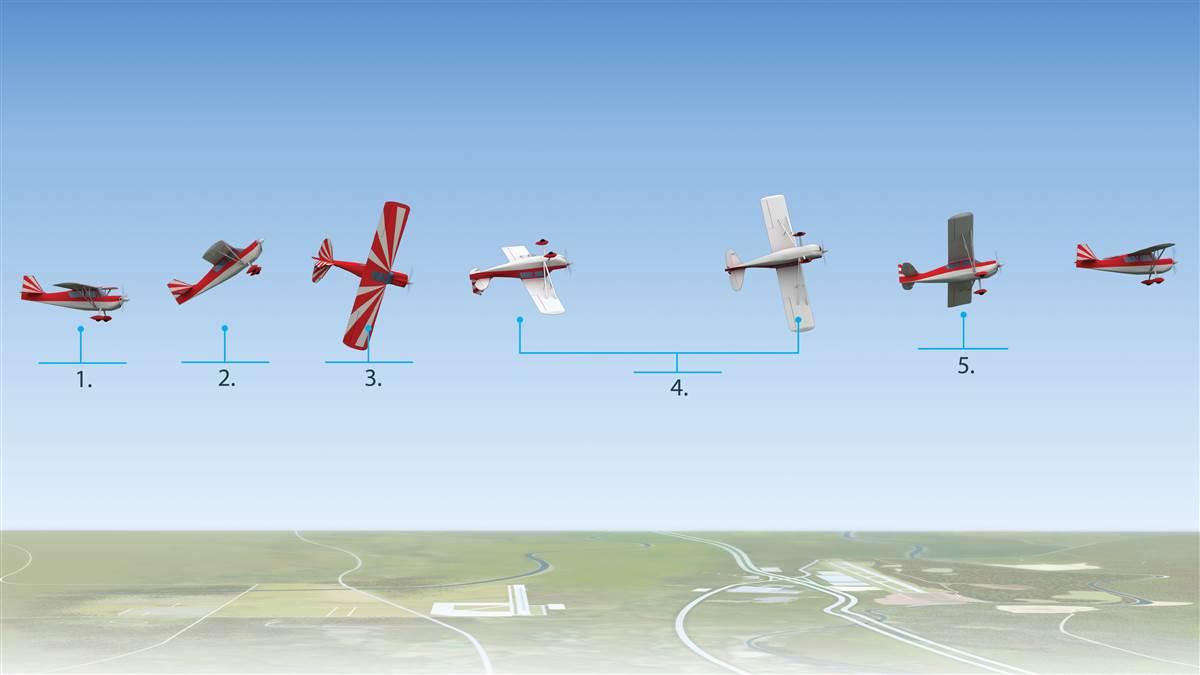
For an airplane to spin, both wings must be stalled—one more deeply stalled than the other—and autorotation must be started with rudder. This basic definition says nothing about the direction the wings are pointed, or the speed with which a spin is entered. That’s because, just like a normal stall, a spin can develop at any attitude and any airspeed.
Snap rolls are not only fun to watch, but they also are a perfect example of this concept. That’s because a snap roll is nothing more than a power-on spin. Although typically flown on a horizontal plane, they can be entered straight up, straight down, and anything in between.
Here’s the general technique for a standard aerobatic aircraft. Attempt only with a knowledgeable flight instructor and properly certificated aircraft.
Steps
1. Fly straight and level at a normal airspeed, that is below maneuvering speed.
2. To begin the snap (or flick, to the Brits), the airplane must be stalled. To do so, pull back hard on the stick or yoke.
3. Almost immediately add a strong yawing motion with rudder in the desired direction of the turn. This begins the autorotation portion of the snap. Aileron isn’t necessary, but it can help the rotation if applied in the same direction as the turn.
4. Hold those inputs throughout the snap. If you let go, the airplane will likely exit by itself and enter a limbo between stalled and flying, in an attitude that’s likely not going to be straight and level.
5. To recover, apply rudder opposite the direction of the turn, and reduce back-pressure, just as you would in a normal stall recovery.
Word to the wise
Snap with care
Flying a great snap roll—one in which the heading and altitude change little from beginning to end—is attainable only for the best pilots. But the basic maneuver can be done by virtually any pilot, provided he or she has the right equipment and a bit of training. As with all aerobatic maneuvers, there are certain regulations to keep in mind, the most important of which is to do it in the right airplane. Many training aircraft are certified for spins, but usually only aircraft in the acrobatic category are certified for snap rolls, and that’s because the additional speed translates to much more stress on the airframe. So don’t try this in your Piper Cherokee.



